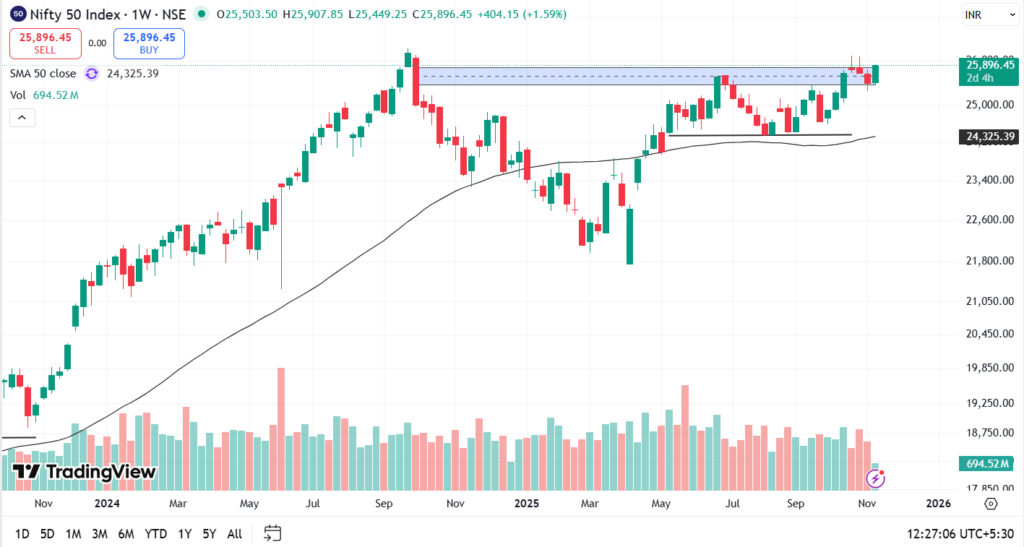A sideways, range bound market messes with investor psyche in a manner that a bear market does not. When price damage is visible on the screen within a short period of time, the market forces investors into action and keeps interest level high. Since the recent bull market is still fresh in investor minds, there is still a sense of medium term optimism that has a say in most decisions. A sideways market that shows a negative return over 12-18 months tells investors in a subtle manner that the market can stay depressed long enough for their patience and conviction to get tested.
Investing isn’t unique this way, health tends to work similarly too. A short, acute period of illness doesn’t depress patients. What depresses them is a sustained period of bad health that starts to affect the way they go about their lives. While a range bound market is in no way as serious an issue as a sustained period of bad health is, the analogy still holds. Doctors tell patients that they need to stay the course and ingrain better habits, they may not pay off immediately but the cumulative effect of doing things right over time does pay off for most people. What most people lack isn’t motivation or optimism, they just lack the discipline to stay put in the face of neutral/negative outcomes.
On a tangent, this is why FIRE is overrated in our book. An individual should have enough productive pursuits in life so that one doesn’t get excessively perturbed by a lack of progress in one aspect. This will be a detailed post for another day though.
The Q2 FY26 earnings season has been a mixed bag. Towards the end of October, one got the feeling that earnings season was going well for the larger businesses. Come November, it has turned into a volatile market for the smaller businesses. Any business that didn’t meet expectations saw a sharp price fall post results. Even those that printed excellent results are finding it tough to sustain gains. The same result in a different market would have seen the higher prices sustain, but not this market. Depending on your timeframe, you will either love this market or hate it. If your horizon is 3 months, you don’t have much incentive to get aggressive yet. If anything you will try to book out at higher levels. If your horizon is 3 years, you will love this market reaction since you still have time to do the grunt work & plan allocation out.
Macro clouds have cleared up a bit since August. US and India are closer to a trade deal than they were then, inflation trajectory in India looks comfortable to the central bank which has clearly become growth focused with a slew of lending norm easing. The festive season appears to have gone well post the GST cut and there are early signs of better consumer demand in H2. While the GST rationalization could lead to some pricing dislocation in Q3, the market will look past this if the view on medium term demand is healthy. As they say, a bull market has to climb a wall of worry. Indian equity market has been climbing multiple worries for many months now, especially in the benchmark NIFTY 50 which looks interestingly poised right now.

This is just on the back of domestic liquidity with limited support from the FPIs so far. Once the FPI flows turn positive, one should not be surprised if the trend enters a blue sky mode. That doesn’t mean that the entire market is doing equally well. The weekly chart indicates that the BSE SMALL CAP index is much weaker than the NIFTY 50 as of now, though the trend there has gotten slightly better too.
Experienced investors know well that outsized gains from a stock need multiple things to work together – sector tailwinds, good earnings growth and a fresh narrative that can lead to a tangible & sustained multiple rerating. Just as rerating is a reality, so is multiple derating. Many themes that ran brilliantly till July 2024 aren’t seeing the same investor enthusiasm today, even if the the numbers have been good for some of them. It isn’t just a fickle market that drives this, there has also been a tangible shift in the ground reality. The freebie driven election culture that has significantly picked up traction since June 2024 is taking capital away from a few areas that were the beneficiary till then. Governments across the world have limited resources and are highly indebted, higher spending in one area will mean lower spending in another.
The erstwhile UPA Govt went heavy on NREGA, social spending and Food Security post the 2008 GFC. Leading stocks in core sectors like Infra & Power reclaimed their 2008 highs in 2010 and then fell into a long bear market once investors realized that the ground reality in terms of Govt spending and priorities had shifted conclusively. While the current Govt is still prioritizing core sector spending, their hands are tied by the new electoral reality since 2024. Reading from the Govt actions, consumption revival has emerged as a bigger priority for them that has resulted in a front loaded rate cut, Income tax changes & GST rationalization since Feb 2025. The geopolitical switches also indicate that India will need to have a stronger ingrown economy that is immune to the mood swings of the West. Some of the big beneficiaries of this are likely to emerge from sectors like consumer discretionary, electronic manufacturing & defense. While a pickup in broader consumer spending is awaited, the other two sectors are already firing on all cylinders if one looks at the quarterly results & order books of the listed companies.
Those who were set in their ways and stuck to the themes that worked well prior to 2021 have seen a torrid time ever since. Reluctance to have an open mind and observe what was changing on the ground led to significant opportunity losses for many fund managers & investors. Investors should be perpetual information assimilation machines and always keep an eye out where the delta change is maximum in terms of growth outlook & margins. Breadth matters much more than depth for those with a medium term horizon. There is only a limited amount of incremental insight that even an excellent analyst can generate in businesses that have good disclosures and disseminate data in a timely manner. For most investors, focus on breadth in a market pivot year like CY25 may serve them better than an obsessive focus over a limited set of businesses. Ideally one should be spending an hour daily on browsing through all results during quarterly earnings season. One will be pleasantly surprised at the number of businesses that are delivering good earnings that one has no clue about.
Investors will also need to look past the superficial narratives in the emerging sectors. One of the current hot themes – data centers is nothing new or flashy. I remember bidding for a total outsourcing deal in my core banking salesman days that involved setting up a DC/DR (data center/disaster recovery) infrastructure. The unit economics of this scope was so inferior compared to the services bit that we were happy to subcontract this piece to a vendor and save ourselves the headache. Building a DC needs civil construction work, electro mechanical plumbing work, HVAC, setting up power supply components & substations, procuring servers, establishing a NOC (network operations center) and having a 24/7 staff ready to monitor & troubleshoot things when needed. Extremely detail oriented, ops heavy work that wasn’t going to be very remunerative. We could make more money reselling Oracle licenses and IBM WebSphere licenses than we could in managing the data center. Don’t let a superficial narrative lead you into areas that aren’t as lucrative on the ground. Our current view is that the data center theme should be played through proxies that stand to benefit without taking balance sheet risks rather than those who are putting in upfront capital. Any business model where one needs to make upfront investment into a set of technology components that can depreciate fast and the unit economics can turn for the worse over the project period is fraught with risk.
What this means for investors is that we need to have an eye open for the themes that are catching the market’s fancy but also have the ability to drill down into core business fundamentals. Not every catchy theme will be worth investing into, especially if you have a negative cash flow structure in the first few years following upfront investments. The list of negative criteria is of paramount importance in this situation. Else we run the risk of chasing fancy themes that will be set up for failure in some time due to a combination of high valuation & depreciating unit economics. The funny aspect of quant investing is that all such stories will show up in momentum driven portfolios at the exact same time, things eventually ugly once the music stops for investors who couldn’t take a timely exit.
Cast your net wide and keep pruning exposure to businesses that aren’t able to execute well – this could be the optimal approach for investors who tend to lose patience within a year and don’t have differential insights to begin with. Accepting our own constraints and limitations can prevent us from making large mistakes.
From here we will be moving to a newsletter every two months. By the time the next newsletter is due, we will hopefully be in a market that has made up it’s mind on which way it is headed.
As has been the case with previous market pivots, if your recent picks have been doing better compared to the legacy ones, it is time to get more active and pursue an optimal amount of portfolio churn. It has been a very productive period for business research over the past few months, we have enough stocks in the pipeline to be able to execute pivots when needed.

